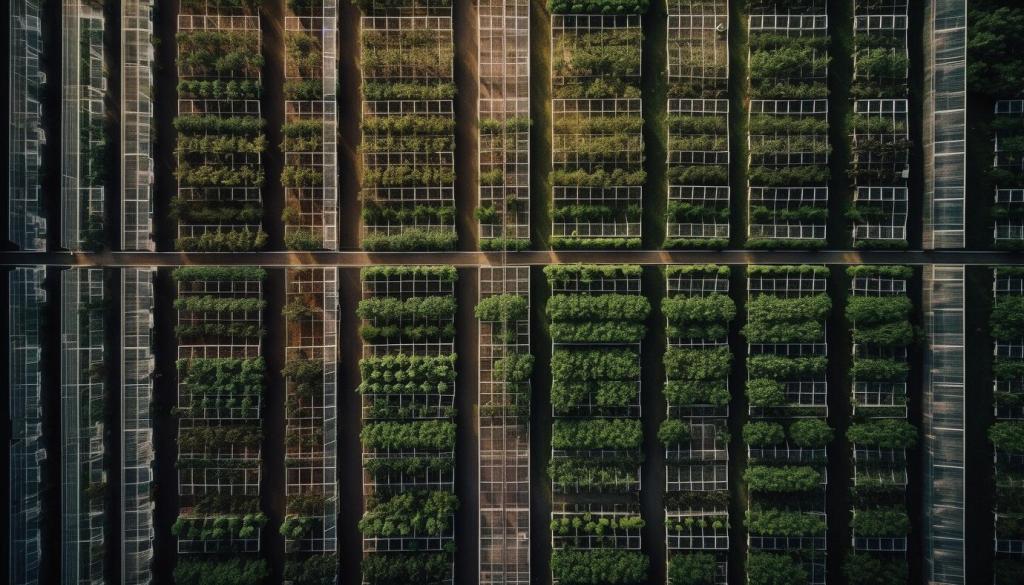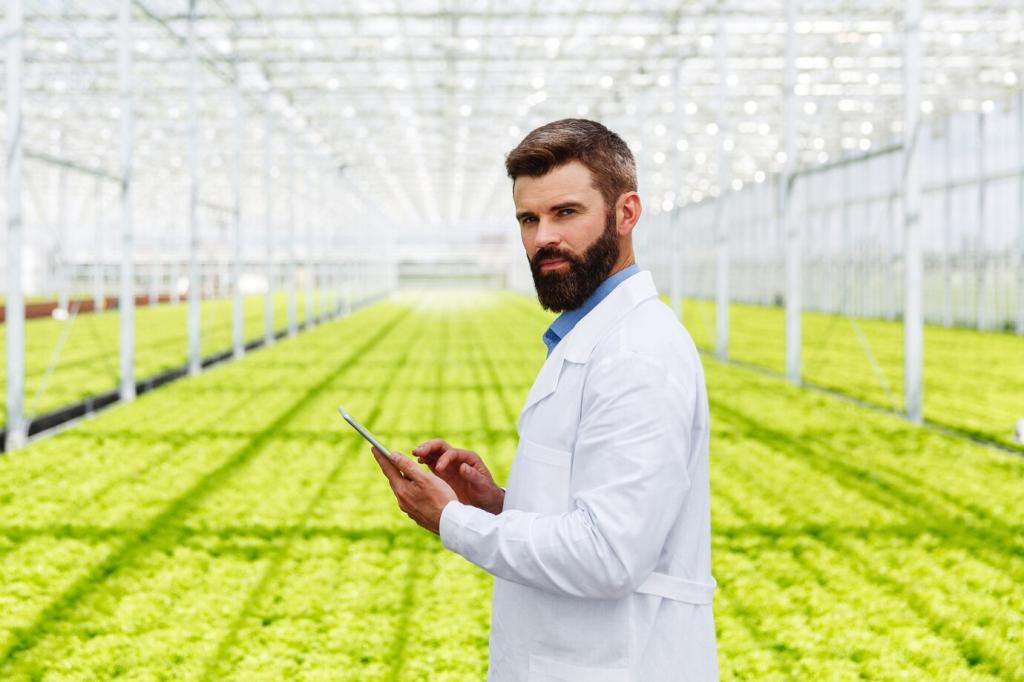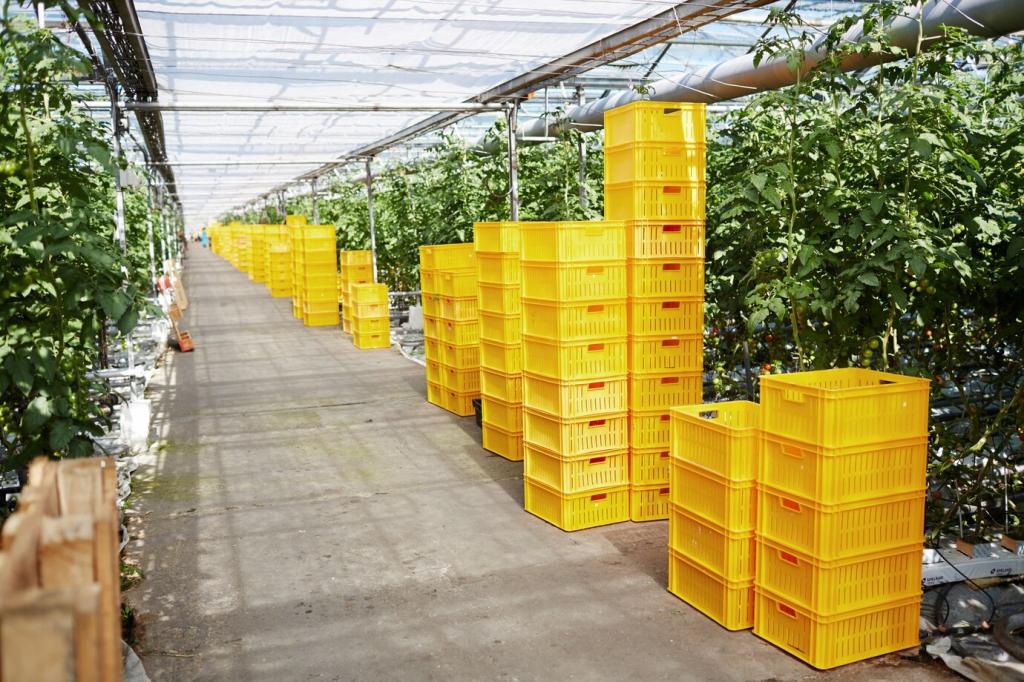Innovations in Urban Vertical Farming Technologies
Urban vertical farming is rapidly transforming city landscapes and the ways we produce and consume food. By optimizing space, resources, and technology, this advanced approach is addressing some of the world’s most pressing challenges: food security, sustainability, and environmental impact. Driven by cutting-edge innovations, vertical farming is enabling city dwellers to access fresh, nutritious produce year-round, right where they live. This page explores the most impactful developments in urban vertical farming and how they are shaping the future of sustainable agriculture.
Advanced Lighting Solutions

Recent advances in LED technology allow urban vertical farms to tailor light spectra specifically to the needs of different crops and even individual growth stages. By precisely controlling wavelengths, farmers can optimize photosynthesis, resulting in faster growth rates and higher yields. This fine-tuned lighting also enhances plant characteristics such as color, taste, and nutritional value. Customizable LED solutions reduce energy waste by delivering targeted light only when and where it’s needed. This innovation is critical for the economic viability of vertical farms, dramatically reducing electricity costs compared to traditional greenhouse lighting.
Previous
Next
Next-Generation Hydroponic and Aeroponic Systems
Modern hydroponic systems employ closed-loop water circulation, dramatically decreasing water consumption when compared to conventional farming. Nutrient-rich water is pumped directly to plant roots, and any excess is recaptured and recycled. This loop ensures that plants receive constant hydration and nutrients, while the system self-adjusts to minimize waste. The combination of water savings and consistent plant care leads to robust crop yields, making hydroponic platforms especially valuable in urban settings where water and space are limited.

Integrated Climate Control and Monitoring
Heating, ventilation, and air conditioning (HVAC) technologies tailored for vertical farming now offer dynamic, zone-based approaches. These systems monitor temperature, humidity, and airflow across different tiers and sections of the farm, adjusting settings continuously to ensure uniformity. This adaptability delivers significant energy savings while maintaining ideal conditions for each crop variety. As vertical farms expand within urban buildings, the ability to manage microclimates independently on each floor or section is a key driver of operational success.
Automation and Robotics in Crop Production
Automated Seeding and Harvesting
Robotic arms and gantry systems precisely handle seed planting and harvesting with minimal human intervention. These machines can adapt to different crop types and growth trays, dramatically speeding up processes that otherwise require manual labor. With built-in quality controls, automated systems ensure seeds are accurately placed and crops are harvested at peak readiness. Vertical farms benefit from faster turnaround times, lower labor costs, and improved consistency, allowing them to operate at a commercial scale within urban spaces.
Conveyor-Based Plant Mobility
Mobile conveyor platforms are reimagining the way plants travel within vertical farms. These systems transport growing trays between planting, growth, inspection, and harvesting stations, reducing the need for human transport and minimizing plant disturbance. Conveyors can be programmed to optimize space utilization and coordinate with environmental management systems for seamless scheduling. The increased efficiency amplifies a farm’s ability to scale up without proportional increases in staff or space requirements.
Remote Monitoring and Maintenance Robots
Specialized service robots patrol vertical farming facilities, equipped with tools and sensors for plant inspection, pruning, and system maintenance. These units navigate narrow aisles and multilevel structures with ease, employing artificial intelligence to identify issues such as pests, diseases, or equipment malfunctions. By automating routine monitoring and light maintenance, robots increase reliability while providing a constant stream of operational data. This innovation empowers urban vertical farms to maintain optimal production with leaner, more skilled teams.
Artificial Intelligence and Data-Driven Farming
AI Plant Health Diagnostics
Machine learning models analyze images and sensor readings to diagnose plant health with impressive speed and accuracy. By identifying early signs of disease, nutrient deficiencies, or pest infestations, AI-driven systems enable farmers to intervene before problems escalate. This proactive approach reduces losses and eliminates unnecessary pesticide use, supporting more sustainable and profitable operations. The integration of AI with mobile apps and farm management systems ensures insights reach decision-makers instantly.
Yield Forecasting Algorithms
Advanced predictive analytics are now used to forecast yields based on current plant performance, environmental data, and historical outcomes. These tools help farmers adjust strategies in real-time, allocate resources more efficiently, and plan distribution well ahead of harvest. Accurate yield forecasting is essential for meeting the expectations of consumers, retailers, and food supply chains in densely populated urban areas, minimizing food waste and ensuring steady market supplies.
Automated Recipe Formulation
AI is increasingly used to generate custom ‘recipes’ for plant nutrition, hydration, and climate, optimizing conditions to suit specific crops or even target traits such as flavor or shelf-life. Drawing from data across thousands of cycles and variables, these algorithms evolve with each harvest, continuously improving recommendations. Automated recipe formulation enhances consistency, reduces the risk of human error, and simplifies the management of diverse, mixed-crop urban farms.
Previous slide
Next slide
Many vertical farms now employ sophisticated water recycling systems that capture, filter, and reuse runoff from irrigation cycles. By continually circulating water through plant roots and filtration units, these closed-loop systems minimize losses and dramatically reduce the total volume of water required. Farms can operate independently of municipal water supplies, making them less vulnerable to shortages or price fluctuations. This cutting-edge approach is crucial in cities faced with water scarcity, offering a scalable solution that can be replicated anywhere.

Join our mailing list
